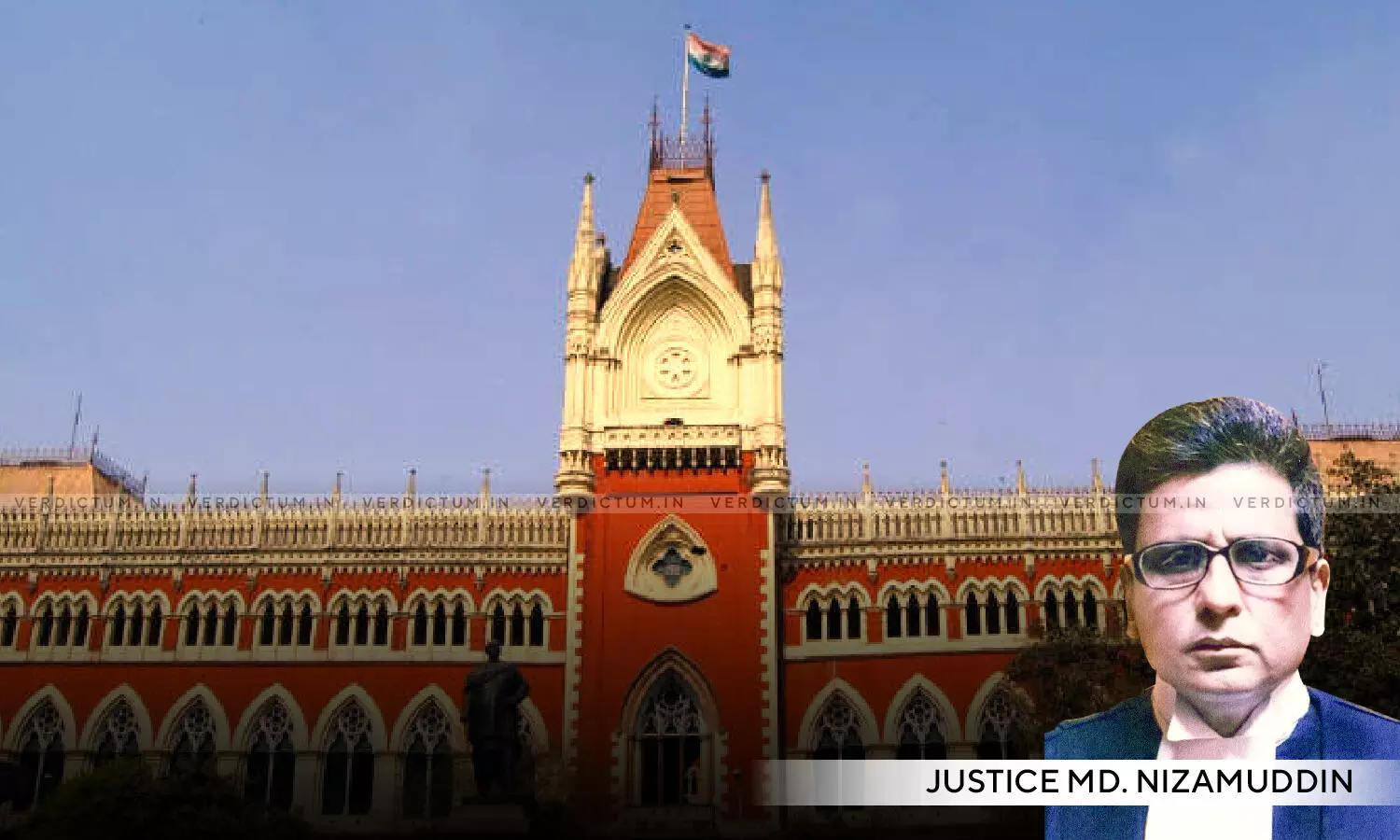
Prospective Amendment Of Explanation To Section 10AA (1) Of Income Tax Act Is Constitutional: Calcutta High Court
 |
|The Calcutta High Court held that the Explanation to Section 10AA (1) of the Income Tax Act, 1961, inserted by the Finance Act, 2017, with prospective effect, is constitutional.
The High Court had held so while considering a petition seeking a declaration to the effect that the Explanation to Section 10AA (1) of the Income Tax Act, inserted by the Finance Act, 2017, with prospective effect, was unconstitutional, alleging a violation of Articles 14, 19(1)(g), and 265 of the Constitution of India.
The petitioner also requested a direction to the tax authority to evaluate the petitioner's claim for deduction under Section 10AA of the Income Tax Act, without applying the afore-mentioned Explanation.
A Single Judge Bench of Justice Md. Nizamuddin observed that “Explanation after Sub-section (1) of Section 10AA of the Income Tax Act, 1961, inserted by amendment with prospective from 1st April, 2018, applicable in respect of the assessment year 2018-19 and subsequent years is constitutional and is a valid piece of legislation and is not arbitrary, discriminatory and is not violative of Articles 14, 19 & 265 of the Constitution of India”.
Senior Advocate J.P. Khaitan appeared for the Petitioner, whereas Advocate Vipul Kunalia appeared for the Respondent.
The brief facts of the case were that the IFGL Exports Ltd. had established its unit at Kandla Special Economic Zone, Gujarat, for the manufacture of specialized refractories and commenced operations from May 2012. It allegedly became eligible for claiming exemption under Section 10AA of the Income Tax Act, from the Assessment Year 2013-14 onwards. The effective date of the amalgamation of the petitioner/IFGL Refractories Ltd. with IFGL Exports Ltd., pursuant to the sanctioned Scheme of Amalgamation by the National Company Law Tribunal, Kolkata, was 1st April 2016. Subsequently, the name of IFGL Exports Ltd. was changed to IFGL Refractories Ltd. On 1st April 2018, an Explanation was inserted after Section 10AA (1) of the Income Tax Act, by the Finance Act, 2017. Consequently, from the Assessment Year 2018-19 onwards, due to the said Explanation, the petitioner company was deprived of the exemption or the entire exemption that was available to it under Section 10AA of the Income Tax Act, before the insertion of the Explanation. This change affected the utilization of loss from its ineligible unit and brought forward losses to be adjusted with the total income of the unit/undertaking, before the exemption under Section 10AA of the Income Tax Act.
On the other hand, the Department opposed by contending that judicial restraint should be exercised when considering challenges to tax legislation, and interference should only occur if it can be demonstrated and proven that such a taxing statute is manifestly unjust or glaringly unconstitutional.
After considering the submission, the Bench observed that the Explanation was not introduced to impose any new tax liability on the assessee.
Instead, its purpose was to clarify the legal position that already existed under the parent provision of the Income Tax Act, added the Bench.
The Bench also observed that, as held in the case of Sivanandan C T And Others v. High Court of Kerala and Others [2023 INSC 709], legitimate expectations cannot impede the authority of a public body in its capacity to formulate policies, which is the foundation of the legislative function of the legislature.
The High Court therefore concluded that the principle of legitimate expectation did not apply to the petitioner's case, and the Explanation inserted after Sub-section (1) of Section 10AA of the Income Tax Act, with prospective effect from April 1, 2018, applicable for the assessment year 2018-19 and subsequent years, was constitutional and valid legislation.
Cause Title: IFGL Refractories Ltd. and Anr v. Union of India and Ors.
Click here to read/ download the Judgment